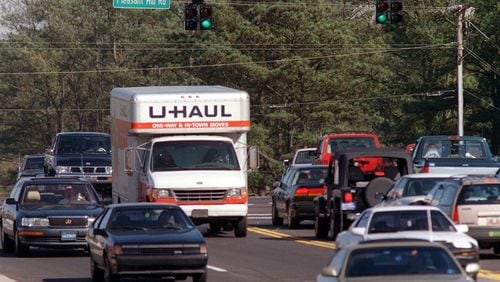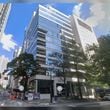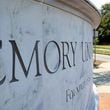MLB reportedly will propose a plan to its players Tuesday that lays out a return strategy. It’s far from a guarantee that the players will accept the presented terms — already there’s talk they’ll fight against further pay reductions — but MLB is trying to assemble a 2020 season.
If this current proposal comes to fruition, teams would be playing games in July, per Ken Rosenthal of The Athletic. The plan includes, according to Rosenthal, a roughly 80-game season with an expanded postseason. Rosters would feature 45 to 50 players. Games would be played at home stadiums without fans.
The factor we’re going to emphasize today: Play would be limited to a team’s division and the other league’s equivalent. In the Braves’ case, that means they would face the National League East while mixing in series with the American League East, which consists of the Yankees, Rays, Red Sox, Blue Jays and Orioles.
As for how this proposal affects the Braves’ on-field aspirations, the schedule wouldn’t be generous.
The Braves already compete in arguably baseball’s best division, but the rebooted system would have them facing another of baseball’s formidable groups. The NL East and AL East each have one pushover, the Marlins and Orioles, but the rest of both divisions are contending or moving in that direction.
Under the new schedule, the Braves could face each team in their division four times (two series at home, two away, presumably) while facing each AL East team twice. So the Nationals, Mets and Phillies could make up roughly 36 contests of the 78-to-82-game slate.
East teams' win totals in 2019:• Yankees, 103• Braves, 97
• Rays, 96
• Nationals, 93
• Mets, 86
• Red Sox, 84
• Phillies, 81
• Blue Jays, 67
• Marlins, 57
• Orioles, 54
The East divisions combined to showcase six winning teams, plus the expensively .500 Phillies. The Central divisions had five winning teams. The West divisions had four. The East divisions also featured four 93-plus winners, while the Central had two and the West had three.
At the bottom of the divisions, the Marlins and Orioles are expected to improve (it’s hard to get worse). But neither will make much noise regardless of the season’s length or schedule, and each is facing the uphill climb of exiting their division’s cellar as the retools chug along.
Miami brought in several veterans, trying to stabilize its lineup while the youth is ushered in. The Marlins’ fight is to achieve respectability (70-wins range), which still shouldn’t sniff fourth place in the NL East. Baltimore likely will rank among MLB’s worst three teams, a year away from bringing up some of its prized youth, including heralded catcher Adley Rutschman, whom it drafted No. 1 overall in June.
While the Orioles and Marlins will get beaten up, the Blue Jays hope to take a leap forward with their impressive building blocks. Toronto signed lefty starter Hyun-Jin Ryu in the offseason, a sizeable move for a team that’s subtracted more than added in recent years.
Toronto’s young lineup is a strength that includes Vladimir Guerrero Jr., Bo Bichette, Lourdes Gurriel Jr., Cavan Biggio and others. The players’ talent and name recognition makes the Jays one of baseball’s most interesting “bad” teams. As the Braves know, those types can arrive early — and loudly.
The Phillies considered last season a disappointment and fully intended to be in the playoff mix this time, adding starter Zack Wheeler and shortstop Didi Gregorious last winter. The spotlight moved off the Phillies after their big offseason of 2018-19, and they’re probably happy about that.
Toronto and Philadelphia add to the divisions’ middle class. Neither is expected to be an easy out, especially Philadelphia, and both have generated some “sleeper” buzz. As alluded to earlier, that talk seems a year too early for the Jays, though under these unprecedented circumstances, “wildness” is in play.
Also comprising the middle but with more uncertainty: The Red Sox and the Mets. Boston is still a formidable team despite trading former MVP Mookie Betts. However, without Betts and with ace Chris Sale shelved, the 84-win Sox could take a step back. Boston represents the schedule’s wild card.
The Mets’ have a high ceiling and low floor. They caught fire down the stretch last year, even sweeping the Braves in the final three games to end the regular season at 86 wins. Jacob deGrom is the best pitcher in the NL. Pete Alonso could be the best slugger in the NL. The players surrounding them could be good or bad – that’s how the Mets are constructed.
New York could have a potent bullpen with Dellin Betances and an Edwin Diaz rebound. Noah Syndergaard won’t pitch this season, which obviously hurts, but the rotation is still led by deGrom and Marcus Stroman. The versatile Jeff McNeil might be MLB’s most underrated player.
Atop the divisions are true powerhouses. The Yankees are deemed by many as World Series front-runners after adding starter Gerrit Cole. The lineup is frightening, though the rest of New York’s pitching has questions. Nonetheless, the Yankees are AL favorites.
The Braves are loaded with star power and depth that rewarded them 97 wins last season. They lost Josh Donaldson, but added slugger Marcell Ozuna, starter Cole Hamels and reliever Will Smith while retaining some key contributors to last year’s club. It’ll be tough for the Braves to replicate last season’s winning percentage, but there’s a strong case this team is more well-rounded.
Tampa Bay is deep at every spot and planned to make a run at the Yankees for the AL East. The Rays have a case as baseball’s most complete team, and their excellent depth will come in handy during a shortened campaign.
The Nationals are the defending World Series champions themselves. They lost third baseman Anthony Rendon, which undoubtedly weakened the lineup, but kept their pitching staff together. If they make it back to the postseason, they’ll once again be armed with Max Scherzer, Stephen Strasburg and Patrick Corbin.
In all, the two divisions create a star-studded, big-market laden collection that would generate the most attention of the three groupings. It adds yet another unique twist to the Braves’ pursuit of a third consecutive postseason berth.






